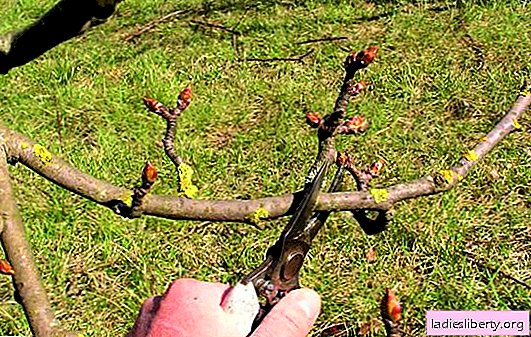
Begonia (Begonia) is one of the most beautiful plants decorating our parks, gardens and homes. It belongs to the Begonia family. Today, there are about 900 species of this plant and up to 2000 of its hybrid varieties. Its history began several centuries ago, and this flower was first described in 1690 by Michel Begon.
He was the organizer of an expedition to the Antilles, where a beauty was found, later named after Begon - begonia. Then the world became aware of the type of evergreen begonia from Brazil, later - the royal begonias from India and the tuberous flower species from South America, which gave rise to all its modern varieties. With the opening of begonias, the royal and tuberous plant became incredibly popular in Europe, first as a greenhouse flower, and then new varieties resistant to the European climate were bred.
Today, a wide variety of hybrid forms and varieties of cultural forms of begonias are widespread throughout the world. All of its cultivated species are conventionally divided according to their decorative qualities. Thus, they are decorative blooming and decorative foliage. The most popular of the beautifully flowering begonias can be called tuber. It attracts gardeners with its plentiful bright flowers and relative unpretentiousness in the maintenance.
Begonia - care
All varieties of begonias are grown in light, loose soil rich in organic matter. Ideally, this is a mixture consisting of an equal amount of greenhouse land for indoor plants, manure organic fertilizer, horse peat and a small amount of fine river sand to improve drainage.
These plants need bright diffused light. You need to know that for begonias with decorative leaves, partial shade will be the best lighting, with decorative flowers - bright lighting (but not direct sunlight). When choosing a place to place these flowers, it is better to give preference to eastern and western windows.
The temperature for plants during the growing season should be moderate, from 18 ° C to 20 ° C, in winter it should be at least 15 ° C. There are no special requirements for air humidity, additional spraying can be carried out only for varieties with smooth leaves. In this case, water must not be allowed to enter the flowers.
Begonia requires regular watering with soft water, without drying out the soil. Watering in the summer should be carried out 2 times a week, in hot weather it should be watered every day. However, the flower pot should not be in water. Starting from mid-autumn, watering intensity is reduced, and from the end of November - beginning of December, it becomes minimal, since in winter the plant needs rest. It is also gradually withdrawn from this state, starting from March to April, and until May bringing watering to normal. When breeding these flowers, you must always remember that excess moisture threatens the plant with rotting of the roots and shoots and the development of powdery mildew, which is extremely harmful to it.
Top dressing is urgently needed only for flowers growing in old soil. As a rule, they are fed for the development of foliage in May-October, once a week, using a special fertilizer for flowering plants.
Begonia - transplant and reproduction
Begonia transplantation is carried out in early spring, as necessary. The fact that a young plant requires transplantation will be told by its roots, which filled a fully flower pot. This should not be done before, otherwise the begonia will not bloom. Her roots are very fragile, therefore, when transplanting, care should be taken not to damage them. The bottom of the pot must be covered with drainage material.
This plant propagates by leaf or stem cuttings, tuberous species also reproduce by dividing tubers with small sprouts. For propagation by cuttings in April-May, cut shoots are placed on a substrate and wait for their rooting, occasionally watering. But this is not a very easy way, as the cuttings can rot or poorly rooted. It is better to buy tubers of an attracted variety, which flower shops offer in a wide variety today.
For propagation by leaf grafting, a strong leaf is selected, cut out from the stem, placed in a moist substrate and placed in a shaded place for 1-2 months before the appearance of new plants. A mixture of sand and peat (3 parts of sand per 1 part of peat) is usually used as a substrate for rooting cuttings.
Begonia - diseases and pests (and how to protect yourself from them).
Petioles and begonia leaves may be susceptible to fungal diseases, such as downy mildew. Fungal diseases are most often caused by an excess of moisture. In order to notice the problem in time, you need to carefully monitor the condition of the core of the bush and the lower leaves of the plant, which are the site of powdery mildew or rot. After removing leaves with signs of the disease, watering should be immediately reduced to avoid the propagation of fungal parasites.
Of the pests, the flower is most often threatened by aphids and a red spider mite. In order to get rid of them, it should be sprayed with a solution of insecticides such as Intavir, Fitoverm, Karbofos, etc. After processing, the plant should be placed in a moist plastic bag to enhance the effectiveness of the procedure. However, as practice shows, with proper care, begonias are very rarely attacked by pests, so to avoid problems, you just need to surround them with care and attention.
Comments











